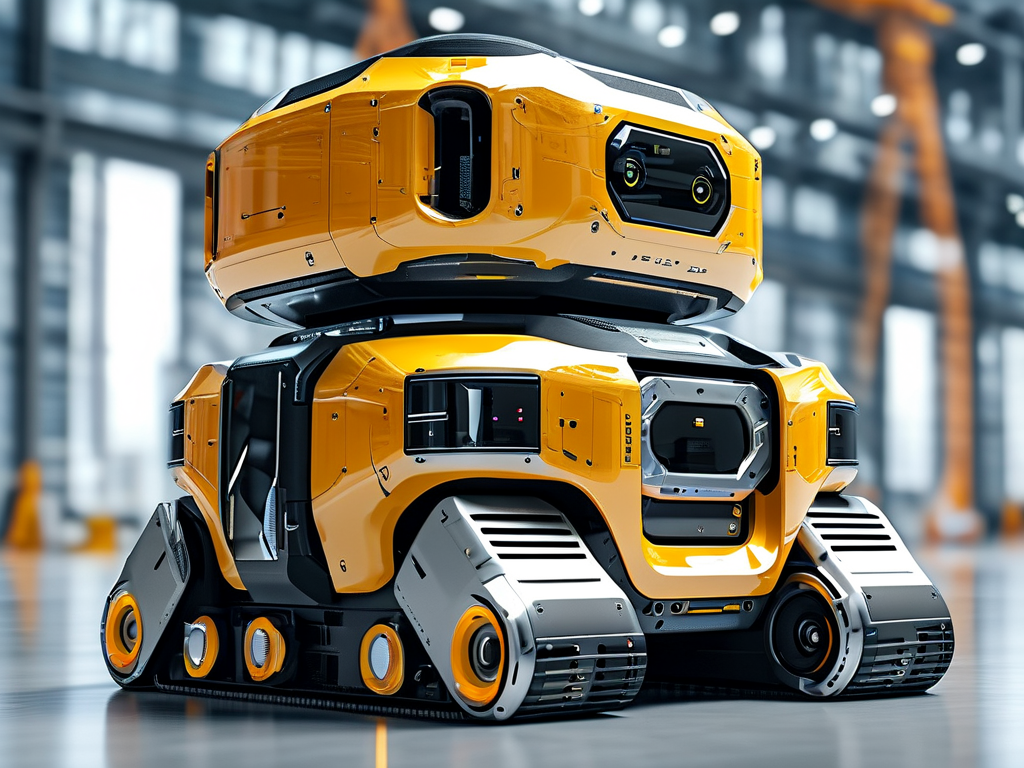The construction industry is undergoing a transformative shift with the integration of robotics into traditional workflows. At the core of this revolution lies advancements in construction robotics hardware technology, which enable machines to perform tasks ranging from bricklaying to structural inspections with unprecedented precision. This article explores the latest developments in this field and their implications for the future of construction.
The Role of Sensor Systems
Modern construction robots rely heavily on advanced sensor arrays to navigate dynamic environments. LiDAR (Light Detection and Ranging) sensors, for instance, provide real-time 3D mapping capabilities, allowing robots to avoid obstacles and adapt to uneven terrain. Coupled with inertial measurement units (IMUs), these systems ensure stability during operation—a critical feature for robots working on high-rise projects. Recent innovations include hybrid sensors that combine thermal imaging with depth perception, enabling robots to detect structural weaknesses in concrete or steel beams.
Actuators and Mechanical Design
The mechanical components of construction robots have evolved to meet the demands of heavy-duty tasks. High-torque electric actuators now replace traditional hydraulic systems in many models, offering greater energy efficiency and control. For example, robotic arms used in automated welding integrate modular joint designs, allowing rapid reconfiguration for different tasks. Manufacturers are also experimenting with lightweight composite materials, such as carbon-fiber-reinforced polymers, to reduce weight without compromising durability.

Power Management Challenges
One persistent hurdle in construction robotics is power autonomy. Unlike factory robots, which operate in controlled environments, construction robots must function for extended periods in remote locations. Innovations like swappable battery packs and solar-assisted charging systems are addressing this issue. A notable example is the use of hydrogen fuel cells in large-scale demolition robots, which provide continuous power while minimizing emissions—a dual benefit for sustainability-focused projects.
Communication Architectures
Reliable communication between robots and control systems is vital for coordinated operations. The adoption of 5G-enabled edge computing has significantly improved data transmission speeds, enabling real-time adjustments during complex tasks like collaborative concrete pouring. Some systems now incorporate mesh networking protocols, allowing robot fleets to maintain connectivity even in GPS-denied environments such as underground tunnels or dense urban sites.
Safety and Compliance Features
As robots share workspaces with human crews, hardware safety mechanisms have become paramount. Force-limiting actuators automatically reduce power when unexpected resistance is detected, preventing accidents during human-robot interactions. Additionally, emergency stop systems now use redundant wireless and wired signals to ensure immediate shutdowns. Regulatory bodies are collaborating with manufacturers to standardize these features, with recent updates to ISO 10218-2 specifically addressing construction robotics.
Future Directions
Emerging trends suggest a focus on multifunctional hardware platforms. Researchers at leading tech institutes are developing “plug-and-play” component systems that allow single robots to switch between excavation, material handling, and quality inspection roles. Another area of exploration is self-repairing materials—metallic alloys with shape memory properties that could automatically fix minor structural damage during operation.
While challenges remain, particularly in cost reduction and workforce adaptation, the progress in construction robotics hardware technology is undeniable. These innovations are not merely automating existing processes but redefining what’s possible in architectural design and project execution. As hardware becomes more adaptive and energy-efficient, the vision of fully autonomous construction sites inches closer to reality.
The convergence of robust mechanical engineering, smart sensor networks, and sustainable power solutions positions construction robotics as a cornerstone of tomorrow’s built environment. Industry stakeholders who embrace these hardware advancements today will likely lead the charge in shaping smarter, safer, and more efficient construction methodologies.


